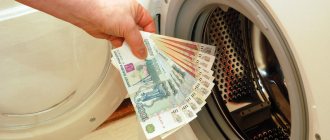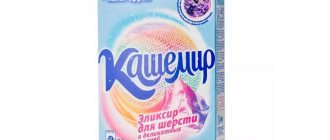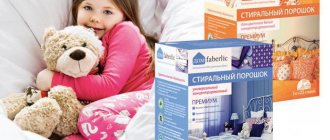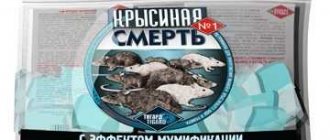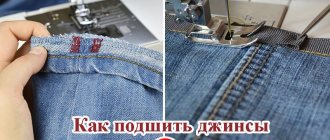Using washing powder is a common option for washing detergent.
In addition to it, alternative means can be used - purchased drugs or those created from improvised means.
This allows you to find a way out of a situation when the powder suddenly runs out or when you want to use a natural remedy.
We'll tell you in this article how you can replace washing powder if, for example, you run out of it at home.
Store-bought or homemade: which is better?
Judging by the reviews of homemade powders, the opinion is mixed. Some housewives claim that there is nothing better than a product prepared at home. Others are skeptical about this idea. Natural products are valued higher, but not everyone is willing to spend personal time creating mixtures and gels when there is a ready-made chemical product in the store nearby. Everyone chooses for themselves what is best for them. Therefore, you should weigh the pros and cons of home remedies, try them and make your choice.
Composition of industrial products
The chemical content in store-bought products speaks in favor of homemade powders. What exactly are powder granules made of, and why are the chemical components dangerous? A detailed description of the composition is given in the table.
Table - Effect of components of industrial powders on the human body
| Compound | Why is it necessary? | Impact on the body |
| A-surfactants (anionic surfactants) | — Eliminate complex contaminants; - remove fat | — Remain on underwear and enter the body through the skin; - accumulate in organs; - inhibit metabolism; - weaken the immune system; - are not completely eliminated from the body |
| Sodium sulfate | — Activates the action of surfactants; – adds volume to the powder (used as a filler) | — Considered relatively safe for health; - often causes allergic reactions: dryness and irritation of the skin |
| Enzymes | Breaks down stubborn stains | — Considered relatively safe for the body; - damage fabrics (with frequent washing, clothes wear out faster); - disrupt the fiber structure |
| Phosphates | - Soften water; - weaken the electrostatic effect | — Keep surfactants on clothes; - dry the skin, disrupting barrier functions; - negatively affects metabolism; - aggravate chronic diseases |
| Phthalates | Retains fragrance | — Enter the body through the respiratory tract; - cause disturbances in the functioning of the endocrine system; - influence sexual development; - can lead to infertility |
| Optical brighteners | Reflects light, making laundry look whiter | — Penetrate through the skin; - accumulate in the body; - have a toxic toxic effect |
| Fragrances | Gives laundry a scent | — Provoke the development of respiratory tract allergies; - aggravate chronic asthma; - cause migraine |
Even knowing about the dangers of the components of the powder, many housewives continue to use it. Industrial products really do a good job of removing stains, bleaching, and giving laundry a pleasant freshness. Not all home remedies effectively and quickly deal with stains. For many consumers, the ideal outcome trumps potential health risks.
Safe home analogues
To make homemade laundry detergent with your own hands, you need to understand which substances will deal with stains and which will help whiten. The components of modern powders can be completely replaced with household products. The table shows analogues of chemical components that perform washing functions no worse than professional powders.
Table - Analogs of chemical powder components
| Functions | Household products |
| Removing stains | — Borax (sodium tetraborate); - laundry soap |
| Whitening | — Soda (baking or ash); - lemon juice; - peroxide; - laundry soap |
| Water softening | — Vinegar solution; - soda |
| Fragrance replacement | Essential oils |
It is better not to use deodorants, perfumes and granular fragrances as fragrances. The chemical composition of the products has a bad effect on human tissue and skin.
Tourmaline Spheres
A unique product for environmentally friendly and economical washing, developed by TianDe, consists of plastic spheres filled with natural components - granules of tourmaline, zeolites, rare earth metals, silver. The action of the device is based on the physical properties of the components. If in ordinary washing powder the dissolving power of water is increased due to surfactants, then in tourmaline spheres a similar effect is achieved due to weak electric currents arising when tourmaline moves in water.
Eco-friendly and completely hypoallergenic laundry detergent allows you to do without powders, bleaches and conditioner. It is enough to place the sphere in the drum of the washing machine, load the laundry and turn on the appropriate mode. When using tourmaline, neither the fibers nor the dyes of the fabric will be harmed. On the contrary, things become softer and the color of the material becomes richer due to the dissolution of the salt film on the surface of the fabric.
Only by replacing chemical powders with natural remedies will you be able to preserve your own health and the ecology of the planet.
Do-it-yourself washing powder for an automatic washing machine: 7 recipes
To make laundry detergent at home, in addition to the ingredients, you should prepare materials and tools. You will need:
- mixing container (bucket, plastic container);
- container with a lid for storage (glass, plastic);
- mixing spatula or spoon;
- fine grater;
- measuring cup or washing powder dispenser.
In accordance with the purpose (for whitening, children's clothing, disinfection), different mixtures are prepared, differing in the number of constituent substances. Below are seven of the most used recipes.
With soda
Peculiarities. There are several options for preparing washing powder from laundry soap and soda. In fact, none of the homemade powders can do without these components, together or separately. The components enhance each other's action. For washing, 72% soap (tar, baby, laundry), ground on a grater, is best suited.
Components:
- baking soda - 500 g;
- soda ash (linen) - 400 g;
- soap - 200 g;
- aromatic oil (optional).
How to do
- Mix crushed soap with types of soda.
- Stir (shake in a closed jar).
- If desired, add a drop of oil and stir again.
Baking soda is more aggressive than baking soda. To enhance the cleaning effect, it is recommended to completely replace the food powder with calcined one. Baking soda dries out the skin, so rubber gloves should be used when washing by hand.
With vinegar
Peculiarities. A powder for washing clothes is prepared from soap and soda powder, with the addition of 9% vinegar. This will help soften the water and preserve the color of the fabric. Only clear vinegar should be used, otherwise the pink or caramel color will remain on the laundry.
Components:
- soap shavings - 150-200 g;
- baking soda and laundry soda - 200 g each;
- vinegar - two tablespoons;
- fragrant oil.
How to do
- Mix two types of soda with shavings.
- Pour in vinegar.
- Add three to five drops of oil to eliminate the vinegar smell.
With borax
Peculiarities. Borax is a disinfectant that is used as a thickener or cleaner. It is a powdery substance used in dry or diluted form. Borax can be replaced with boric acid, sold in pharmacies. Borax will make an effective DIY laundry detergent for children's clothes.
Components:
- shavings of coconut or laundry soap - 200 g;
- borax - 200 g;
- baking soda - 500 g;
- aromatic oil - if desired.
How to do
- Mix the shavings with soda and tetraborate.
- Add oil if desired.
- Dry the mixture next to the battery.
- Pour into a suitable container.
- Before use, dilute with water and pour into the car.
If a liquid boron solution is used, adding one or two teaspoons is sufficient. It is better to store the mixture in a closed container.
From citric acid and soap
Peculiarities. The composition preserves the color of the fabric, but corrodes various contaminants. Lemon juice gently cleans silk and wool items. After washing, the laundry acquires a pleasant light aroma.
Components:
- citric acid - three tablespoons;
- laundry soap - one bar;
- baking soda and baking soda - 500 g each;
- salt - two tablespoons.
How to do
- Rub the soap.
- Pour two types of soda into the shavings.
- “Salt” and add acid.
- Stir, pour into a jar with a lid.
- If desired, add fragrance oil for scent.
Soda has the property of bleaching fabrics and removing color. Therefore, its amount can be reduced, or not used at all for colored items.
With peroxide
Peculiarities. The solution whitens clothes. It can be prepared in advance and stored in the refrigerator, but no more than a month. Before washing, wet the stains with the solution and then add it to the machine.
Components:
- hydrogen peroxide - one glass;
- vinegar solution - half a glass;
- lemon juice - one tablespoon;
- water - half a glass;
- natural flavoring - optional.
How to do
- Mix peroxide with water.
- Add vinegar solution and juice.
- Add a few drops of aromatic oil.
- Stir and pour into a convenient bottle.
Homemade stain remover is made from peroxide, baking soda and dishwashing liquid. All ingredients are mixed in equal proportions (one tablespoon at a time). The mixture is applied to the stain and rubbed into the fabric with a sponge or brush. After two minutes, the product is washed off, and the item is washed in the machine in the usual way.
Laundry capsules
Peculiarities. From peroxide, soda powder, vinegar solution and magnesium sulfate (sold in pharmacies) you get dry tablets that are placed in universal containers, suitable for full washing, including cleansing and conditioning.
Components:
- laundry soda - 350 g;
- laundry soap - one bar;
- magnesium sulfate - two tablespoons;
- peroxide - three tablespoons;
- vinegar solution (9%) - 50 ml;
- fragrance oil;
- baking tray;
- parchment;
- molds (for ice cream or “bombs”).
How to do
- Rub the soap.
- Add sulfate and soda.
- Add peroxide and stir.
- Pour in the vinegar solution and add a drop of oil.
- Stir until the mixture resembles wet sand.
- Prepare a baking sheet, cover with paper.
- Use molds to make semi-circular tablets.
- Place on a baking sheet and dry at 100°C for several minutes. You can do without an oven by leaving the tablets to dry for a day.
Liquid product
Peculiarities. With a little time, it’s easy to prepare liquid laundry detergent yourself. The consistency is similar to a thick gel.
Components:
- laundry soap - 200 g;
- borax - half a glass;
- laundry soda - one glass;
- water - by eye;
- aromatic oil - one teaspoon.
How to do
- Pour the grated soap into the pan.
- Pour water until the liquid completely covers the chips.
- Cook the mixture over low heat until a cloudy, thick solution is obtained.
- Boil half a bucket of water.
- Add borax, soda, and warm soap.
- Stir, add water to the brim.
- Cover with a lid or board and leave for eight hours.
- Add oil to the cooled solution.
- Pour into suitable bottles and store.
Mustard is another home remedy that deals with various stains and whitens laundry. Mustard is not used as a washing powder in an automatic machine (it will swell and clog the drains); it is only suitable for hand washing, when you wash things yourself. The laundry is soaked in a mustard solution, individual stains are treated with mustard paste (a mixture of powder with a small amount of water).
Purchased funds
If you don’t have regular laundry detergent, you can use other store-bought products to get things in proper shape. These are capsules, gels and eco-powders based on soap .
Gels
The gel form of washing powder is a product that can be used for manual and automatic processing of things.
The use of this drug is similar to powder:
- for automatic washing, the gel is also placed in the cuvette of the washing machine;
- if done manually, dilute it in water.
The dosage is indicated on the packaging of the product. There is also information on temperature conditions and what specific things the drug is intended for.
More modern gels are effective, dissolve and rinse well. At retail outlets they are presented in a wide range of different flavors and in containers of various sizes.
Soap powder
Soap powders are environmentally friendly laundry detergents. Such products are aimed at washing children's clothes, clothes for allergy sufferers and people with sensitive skin. Also, soap compositions are preferred by those people who care about the environment.
Depending on the manufacturer's recommendations and the texture of the product, the order of use depends. This could be one of the options:
- falling asleep in a ditch;
- preliminary dilution with water;
- placing directly into the drum.
Soap products are based on soap shavings and additional components. Before using such a product for washing in a machine, you must make sure that the product is intended for this purpose.
Read more about soap powder here.
Capsules
Capsules are a fairly new type of detergent . This is the most compact release form, which is intended exclusively for automatic processing.
The capsules are used very simply - they are placed in an empty drum, and dirty laundry is placed on top. When using such products, no additional preparations are needed, which simplifies the washing process.
Modern capsules are multi-chamber, containing active ingredients in high concentrations. This product category is presented in a wide range of product lines from various manufacturers.
How to bleach fabric without chlorine
There are five ways you can bleach fabric without using chlorine:
- half a glass of ordinary vinegar is poured into the air conditioner compartment;
- baking soda is added instead of powder separately, or with soap root and flavored oil;
- hydrogen peroxide can be added to washing powder, or applied to things during the soaking process;
- Lemon juice is suitable for whitening even difficult stains. It is used for soaking, diluting with water.
See also
What to do if the key in the door lock is broken, how to pull it out and open it yourself
A non-standard way to bleach delicate light-colored items is to soak them in milk.
Mylyanka
A plant with white and pink flowers is called soapwort. It fully lives up to its name and helps deal with stains well. Only the root of the plant is used for washing. Necessary:
- grind 50 g of soap root;
- add 0.5 boiled water;
- leave for a day, stirring occasionally;
- after 24 hours, put on the stove, simmer over low heat for 1 hour;
- cool, strain;
- Pour the resulting soap solution into a basin and you can start washing.
1 portion of the solution is enough to wash 2 very dirty items. The remaining grounds can be refilled with the same amount of water, repeat the procedure, receiving another 1 portion of the cleaning composition. It can be used to wash lightly soiled items.
There are several options for replacing washing powder. Focus on your needs and the degree of contamination of things. Use natural ingredients that do not cause allergies and can even replace children's washing powder.
Modern chemicals for washing and scenting clothes contain a high level of harmful compounds, and do not always wash the item completely. Washing powders are not suitable for allergy sufferers - the active substances in the composition most often cause severe allergies.
The safest and most effective way to wash things without powder is to use regular laundry soap. There are no more allergies with it - even the most sensitive skin will remain clean and will not flake off like after washing powder.
Mustard
This is a unique product that can cope with dirty dishes, greasy hair and old stains. Mustard can be used instead of washing powder. Any item made of silk or wool can be washed perfectly in “mustard water”. In order to prepare the solution, you need to take warm water (one liter), pour three teaspoons of mustard into it and stir until completely dissolved. The resulting composition should sit for 2 hours, after which it should be slowly poured into a container with hot water, trying not to raise sediment from the bottom.
The remaining sediment can be reused for a second wash. You can also add mustard solution during the washing process. Then the laundry should be thoroughly rinsed under running water and dried.
Salt
The use of salt is most effective for washing linen and cotton clothes, and you can wash both white and colored items. The process looks like this:
- You need to place things intended for washing in a large container;
- Next, water is poured, the volume of which should be remembered;
- After this, things are thoroughly wrung out;
- You need to dissolve salt in the remaining water (one tablespoon per liter of liquid);
- Things are soaked in the solution for one hour;
- After this period, the clothes are wrung out and rinsed.
Liquid soap
When you urgently need to do your laundry, but there is no powder, take the most ordinary soap, but not in bars, but in liquid form. But it’s true that it won’t cope with old stains and greasy streaks on things, but the linen itself will be soft and pleasant to the touch.
And since such soap forms a large amount of foam, it is used in a washing machine in limited quantities when loading laundry. How many? A tea Lozhkin one wash cycle will be enough.
Necessary Precautions
Self-created washing powder must be hypoallergenic - this is why most housewives make it. However, the “production” process can be inconvenient. When mixed, tiny particles of ingredients (for example, soda) can enter the respiratory tract, causing a sore throat, tracheal irritation, and bronchospasm. To avoid this, it is necessary to cover your mouth and nose with a medical mask while working.
The negative consequences of using vinegar can be even stronger - even causing a chemical burn. When working with acids (in particular, when they are combined with alkaline components), you must protect yourself with a respirator. Medical gloves must be used. It is also advisable to cover your eyes with special glasses that fit tightly to the skin of your face.
Beans
Few people expect such uses from beans. But it is she who is able to quickly and effectively wash woolen items. Moreover, you have waste-free production. The beans can be used as a side dish, and the water in which they were boiled is suitable for washing. To wash by hand you will need 200 grams of beans, pour one liter of water and cook. After cooling, strain the broth through cheesecloth and pour it into a bowl of water, while whipping up the foam. After the washing is completed, the laundry should be rinsed thoroughly and when rinsing, add one tablespoon of vinegar to a bowl containing 1 liter of water.
Soap root
This special remedy can be freely purchased at the market or pharmacy.
To wash 1 kg of laundry you will need 50 grams of root. To prepare the composition, you need to grind the root in any available way and pour boiling water (0.5 liters). The solution should sit for 24 hours with occasional stirring. Immediately before use, the composition must be filtered through cheesecloth. This amount is enough for 2 washes. The solution is poured into a bowl of warm water and whipped until a fluffy foam forms.
Perox
A universal cleaning product that can also be used for laundry is bleach, but it does not contain chlorine. This product copes well with all types of dirt and stains, and to add fragrance to the laundry, you can drop a couple of drops of any synthetic fragrance into the drum. For one wash cycle you will need about 100-150 ml of product.
As you can see, you can often do without powder, but provided that you choose the right replacement, even if it’s temporary.
AlinaAuthor of the article
Did you like the article?
Share with your friends:

